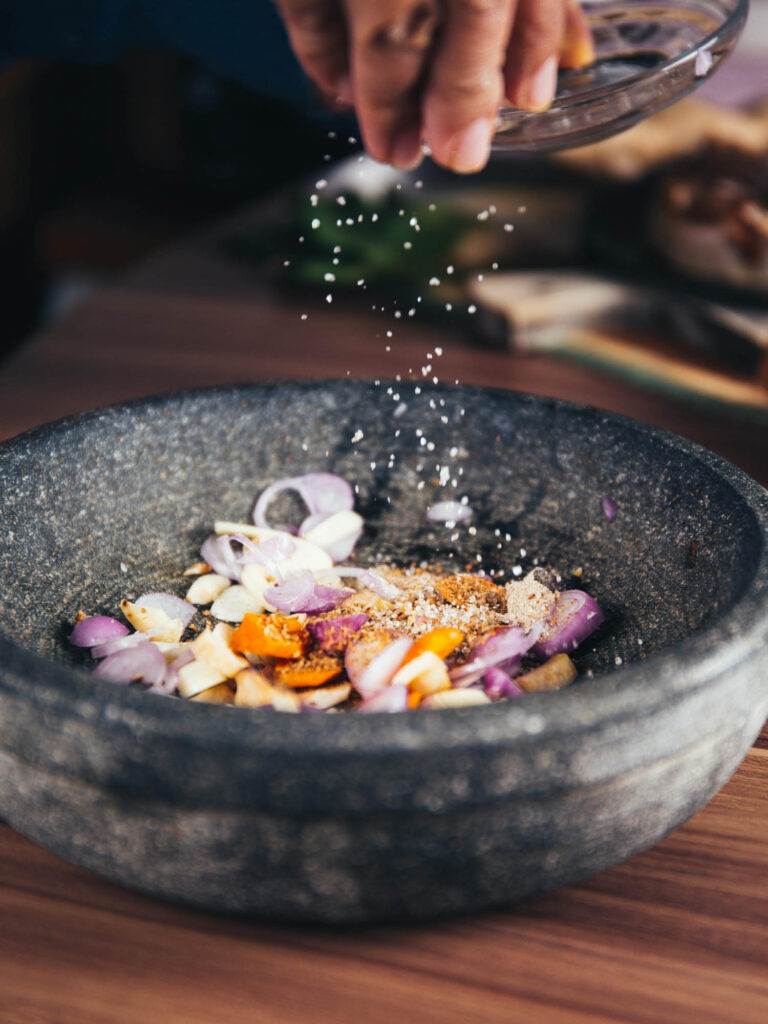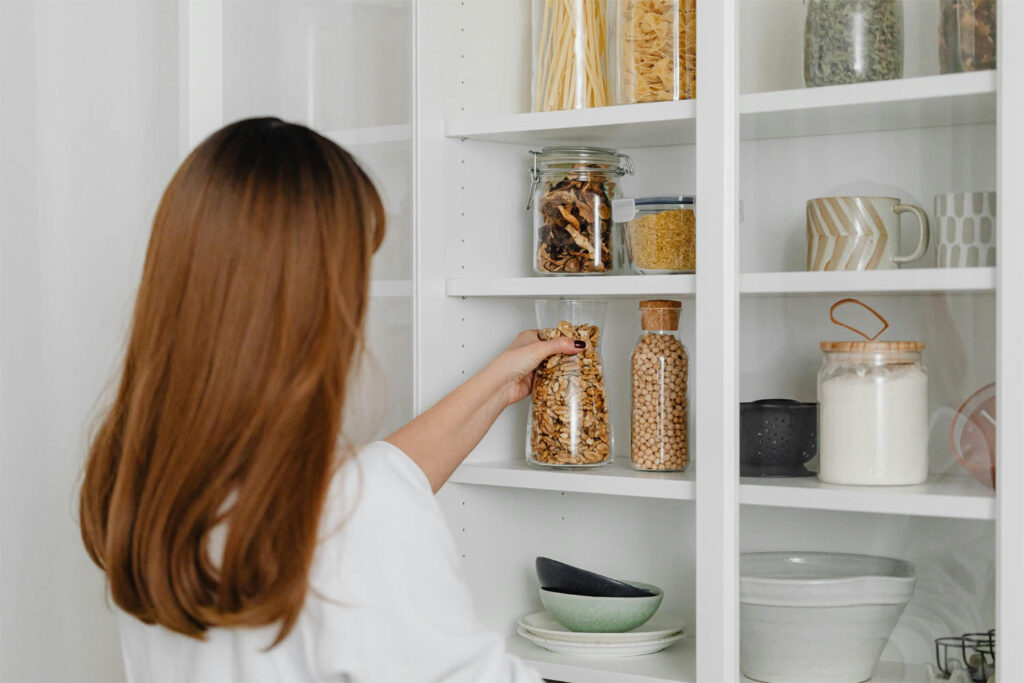Welcome to our guide on transforming your pantry from a cluttered mess into a culinary haven where you can effortlessly create delicious meals. Your pantry plays a crucial role in your kitchen, serving as the hub for ingredients, tools, and supplies essential for cooking and baking.
Yet, all too often, pantries become disorganized and chaotic, making it difficult to find what you need and hindering your culinary creativity. In this post, we’ll explore the fascinating history of the pantry, delve into effective pantry design and plans, and provide practical tips and tools for organizing your pantry space.
Whether you’re a seasoned chef or a novice cook, join us on this journey to elevate your pantry from chaos to culinary bliss.

History of the Pantry
The pantry has a rich history dating back centuries. Originally, pantries were small rooms used for the storage of food and kitchen supplies. In medieval times, they were often located near the kitchen to provide easy access to ingredients. As kitchens evolved, so did pantries, becoming more integrated into the home’s design.
During the Victorian era, pantries were symbols of wealth and status, with elaborate shelving and storage solutions. In the early 20th century, the invention of the refrigerator led to changes in pantry design, with less emphasis on food preservation and more on organization.
Pantry Design and Plans
Designing a pantry involves a careful balance of aesthetics and functionality to create a space that is both visually appealing and highly efficient. The process begins with a thorough assessment of the available space and an understanding of the storage needs specific to the household. Whether you’re working with a spacious walk-in pantry or a compact reach-in area, tailoring the design to suit your requirements is paramount.
For larger households or passionate cooks, a walk-in pantry offers ample storage space and the flexibility to organize a wide array of food items and kitchen essentials. Alternatively, in smaller kitchens where space is at a premium, reach-in or pull-out pantries can provide efficient storage solutions without sacrificing valuable square footage. These compact pantry options optimize space utilization and ensure easy access to stored items, making them ideal for tight kitchen layouts.
When determining the layout of your pantry, versatility and accessibility should be key considerations. Adjustable shelving allows for the accommodation of items of various sizes, from bulk groceries to small kitchen gadgets, ensuring efficient use of available space. Additionally, maximizing vertical storage with hooks, racks, or hanging organizers can free up valuable shelf space and keep frequently used utensils or cleaning supplies within arm’s reach.
To add a touch of sophistication to your pantry design, consider incorporating elements such as glass-fronted cabinets or decorative baskets. Glass-fronted cabinets not only showcase your pantry contents but also create a sense of openness and visual interest. Decorative baskets or bins can serve both practical and aesthetic purposes, adding texture and personality to the space while keeping items neatly organized.
In addition to storage considerations, don’t overlook the importance of lighting in your pantry design. Proper lighting not only enhances visibility but also contributes to the overall ambiance of the space. LED strip lights or recessed lighting fixtures are popular choices for pantries, providing bright, energy-efficient illumination that ensures items are easy to locate, even in the deepest corners of the pantry.
By carefully considering factors such as storage needs, layout, aesthetics, and lighting, you can design a pantry that not only meets your practical requirements but also enhances the functionality and visual appeal of your kitchen space.
Unlock the secrets to transforming your pantry from chaos to culinary haven with effortless cooking in this comprehensive blog post on mastering pantry design and organization. Keep reading to learn more!

Organization and Tools
Maintaining a well-organized pantry is essential for optimizing functionality and ensuring that your kitchen operates smoothly. Effective organization begins with categorizing your pantry items into logical groupings, such as canned goods, grains, spices, and baking essentials. By grouping similar items together, you create a cohesive system that makes it easier to locate ingredients and keep track of your inventory.
Investing in storage containers is a practical way to keep your pantry neat and tidy while also preserving the freshness of your food items. Choose airtight containers made of high-quality materials to ensure that ingredients stay fresh longer and are protected from moisture, pests, and other contaminants. Clear containers allow you to easily see the contents inside, making it simple to identify items at a glance.
Labeling is a crucial component of effective pantry organization, helping to eliminate guesswork and confusion when searching for specific items. Utilize a label maker or chalkboard labels to clearly mark the contents of each container or shelf. Be sure to include expiration dates or use-by dates on perishable items to help prevent food waste and ensure that ingredients are used in a timely manner.
To maximize space and optimize accessibility within your pantry, consider incorporating a variety of storage solutions and organizational tools. Stackable bins are ideal for storing items such as snacks, condiments, or baking supplies, allowing you to take advantage of vertical space and keep your shelves tidy. Lazy Susans or turntables are useful for storing spices, oils, or condiments, making it easy to access items stored at the back of shelves with a simple spin.
Door-mounted organizers are another space-saving solution that can help maximize storage capacity in your pantry. These versatile organizers can hold anything from spices and condiments to cleaning supplies or kitchen tools, keeping frequently used items within arm’s reach. Pull-out drawers or baskets are excellent for deep shelves, allowing you to easily access items stored in the back without having to rummage through the entire pantry.
In addition to storage containers and organizational tools, there are several essential items that every well-equipped pantry should have. Airtight canisters are perfect for storing staples such as flour, sugar, or rice, keeping them fresh and free from moisture or pests. A dedicated spice rack or drawer organizer provides easy access to your collection of spices, ensuring that you can quickly find the flavorings you need for your culinary creations.
Finally, a sturdy step stool is indispensable for reaching items stored on high shelves, ensuring that every inch of your pantry space is utilized efficiently. By incorporating these organizational strategies and essential tools into your pantry design, you can create a well-ordered and functional space that enhances your cooking experience and streamlines meal preparation.
In conclusion, with thoughtful design and organization, your pantry can become a culinary haven where you can effortlessly create delicious meals. By incorporating adjustable shelves, proper lighting, and a variety of storage solutions, you can transform your pantry from chaos to order. Invest in quality storage containers and essential tools to maximize space and keep ingredients fresh.
With these tips, you’ll be well on your way to mastering pantry design and organization for effortless cooking.











